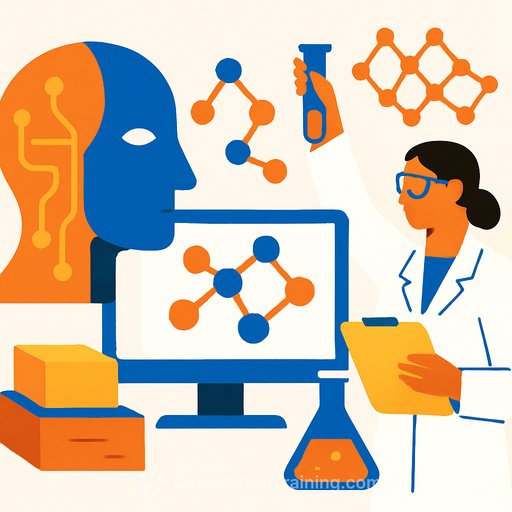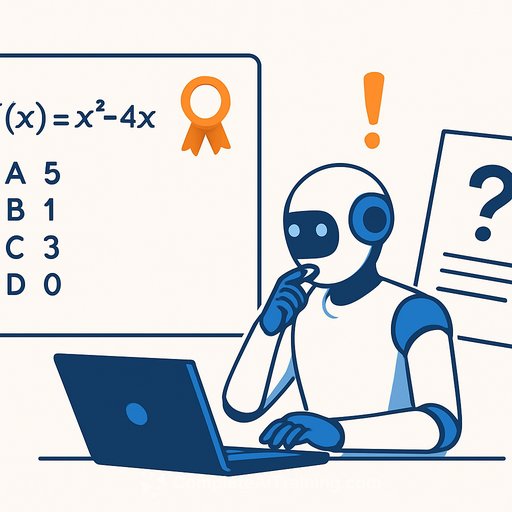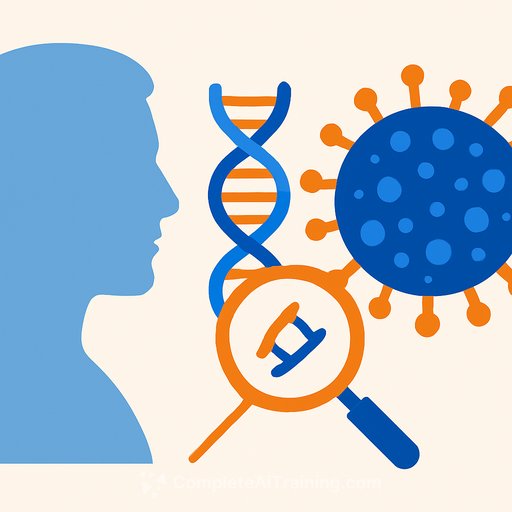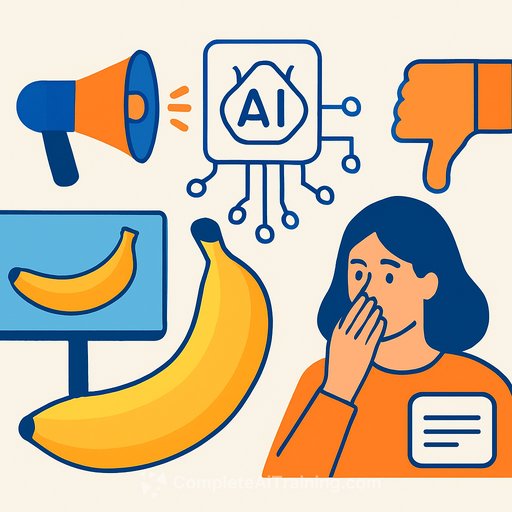AI is dreaming up millions of new materials. Are they any good?
Big claims landed fast: millions of stable crystals proposed by AI, robots making compounds on demand, and targeted generators that design materials with a property in mind. Then the critiques hit: too many unmakeable compositions, ordered structures that won't exist at lab temperatures, and results that don't hold up under real synthesis and characterization.
Strip away the noise and there's a clear signal. These tools are getting useful - as hypothesis engines and triage systems - but only when they're paired with rigorous filters, solid physics, and careful experiments.
What the new wave actually did
One team used a graph neural network (GNoME) trained on existing DFT results to score stability quickly, then looped predictions through DFT to refine the model. That yielded 2.2 million candidate crystals, including 52,000 layered structures and 528 potential lithium-ion conductors.
A robotic platform (A-Lab) mined thousands of synthesis papers, proposed procedures for targets from databases, and used automated characterization to iterate. The paper reported 41 claimed syntheses.
Another effort (MatterGen) focused the search: generate crystals that meet predefined property targets, skipping brute-force enumeration. A separate program used ML surrogates for DFT to screen MOFs for strong CO2 binding, flagging 100+ promising structures.
Where the pushback lands
Researchers flagged issues that matter in the lab. Some AI-suggested compounds depend on scarce or radioactive elements - more than 18,000 involved promethium or protactinium - which limits practical value.
Ordered structures predicted at 0 K often relax into disordered phases at real temperatures. A study trained on experimentally determined structures estimates that 80-84% of "stable" ordered candidates would be disordered in practice. That changes both feasibility and properties.
Characterization became a flashpoint. Critics argued that some claimed "new" syntheses were actually known disordered phases or misassigned structures. The A-Lab team stood by its identifications and noted that disordered versions are often regarded as acceptable matches.
For CO2 capture, experts questioned whether the flagged MOFs are viable for direct air capture once kinetics, humidity, cycling, and process economics are considered.
What still looks useful
AI is a fast filter. It narrows a huge chemical space to a manageable short list, then physics-based methods and experiments do the heavy lifting. More than 700 GNoME-predicted compounds have reportedly been synthesized by independent groups, and the predictions helped guide new caesium-based materials of interest for energy and optoelectronics.
Property-conditioned generators (like MatterGen) reduce wasted computation by targeting what you actually want, rather than hoping a lucky hit emerges from millions of candidates. Literature-mined synthesis planning and closed-loop labs can accelerate iteration - if the characterization is rigorous and uncertainty is reported.
A practical workflow for research teams
- Treat AI outputs as hypotheses, not results. Rank by evidence strength, then decide what merits DFT, phonons, and an experiment.
- Filter the chemistry first. Exclude toxic, scarce, or radioactive elements; set cost and supply thresholds; enforce valence and charge-balance sanity checks.
- Account for disorder. Use models trained on experimental structures to flag likely site mixing/substitution. Expect different properties if disorder is present.
- Check dynamic and thermal stability. Go beyond formation energy: phonon calculations, finite-temperature effects, and competing phases matter.
- Be property-first. If you care about ionic conductivity, bandgap, or adsorption energy, use targeted generators or multi-objective screening upfront.
- Cross-reference databases. Deduplicate against existing entries (prototypes, symmetry, composition). Compare with Materials Project and OQMD before claiming novelty.
- Plan synthesis with constraints. Use literature-mined routes as seeds, but incorporate phase diagrams, kinetics, and volatility. Track intermediate phases and off-stoichiometry.
- Raise the bar on characterization. Do PXRD with Rietveld refinement, report residuals; add electron diffraction, TEM/EDX, ICP, and PDF where relevant. State disorder explicitly.
- Quantify uncertainty. Report model confidence, DFT functional choices, and sensitivity to temperature and pressure. Avoid single-number claims.
- Close the loop. Feed negative and partial results back to the models. Archive raw data and scripts to make reproduction straightforward.
What to watch next
- Disorder-aware generative models and ML+DFT ensembles that score stability and transport at finite temperature.
- Synthesis predictors that include kinetics, diffusion, and volatility, not just thermodynamics.
- Open corpora of failed syntheses and misassignments to reduce repeated dead-ends.
- Clear standards for what counts as a "new material" versus a new ordered model of a known disordered phase - and what counts as a "useful property."
Bottom line
AI already helps explore chemical space at a scale that human intuition and pure DFT can't match on their own. It becomes valuable when you constrain it with chemistry, validate it with physics, and confirm it with experiments.
Use it to ask better questions, faster - then let synthesis and characterization give the final answer.
Further resources
- Materials Project - structures, DFT data, and workflows
- OQMD - large-scale DFT database for inorganic materials
Skill up
If you're building an AI-assisted R&D workflow and want structured training, see AI courses by job for options relevant to research teams.
Your membership also unlocks:






